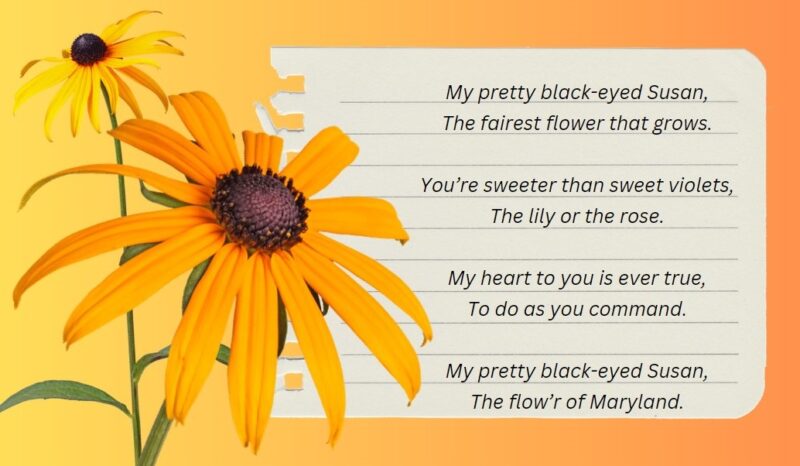Rudbeckia hirta, commonly referred to as the Black-eyed Susan, is the state flower of Maryland. How was this flower chosen as the state symbol? The state government officially adopted the Black-eyed Susan in 1918, but its journey began twenty years earlier at the Maryland Agricultural College.
In 1898, the Farmers’ Institute decided to hold a “Round-Up” from August 24th-26th on the college campus. Farmers from around the state were encouraged to attend, and a special “Woman’s Section” meeting was planned for any female attendees. The meeting was held in “Library Hall,” which was most likely part of the old library/gymnasium building on campus.
Several newspaper accounts mention the surprising number of ladies present – more than 100 according to reporter J. Rob Ramsay. One of the topics raised at the meeting was the necessity for a state flower. Ramsay states that a vote by county was taken, and the results were as follows: 42 votes for the Black-eyed Susan, 28 for the goldenrod, and 1 for the daisy.
While this vote indicated the popularity of the Black-eyed Susan, official action was not taken until two decades later. Early in 1918, a disagreement broke out among several state senators over the state flower.
Senator Bomberger initiated the argument by introducing a bill to make the Black-eyed Susan the official symbol. He pointed out that the black and yellow flower matched the colors of the Calvert family crest, which were also colors on the state flag. His supporters referenced a popular song that connected the flower to Maryland, and reminded senators of its popularity among Maryland residents.

My pretty black-eyed Susan,
The fairest flower that grows;
You’re sweeter than sweet violets,
The lily or the rose.
My heart to you is ever true,
To do as you command.
My pretty black-eyed Susan,
The flow’r of Maryland.
Delegate Mitchell, an opponent of the Black-eyed Susan, presented the goldenrod as an alternative. He argued that the goldenrod would honor fallen soldiers, while the Black-eyed Susan could be seen to represent “a black eye from the Kaiser” (remember, World War I lasted until November 11, 1918).
Mitchell’s arguments could not compete against the overwhelming popularity of the Black-eyed Susan, and the legislature passed the bill in the spring. Governor Harrington approved the bill on April 18, 1918. Thanks to the support of groups like the women at the Farmers’ Institute Round-Up in 1898, the Black-eyed Susan became the Maryland state flower.
Explore the eerie allure of Maryland’s renowned haunted locations, where chilling encounters await those seeking a taste of the supernatural, all while delving into the captivating story behind the Black-Eyed Susan’s rise as “The Flower of Maryland.”







